This article is part of our insurance innovators interview series.
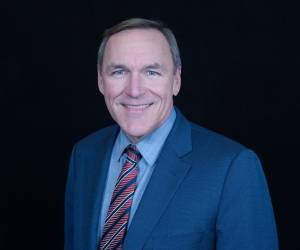 Stanley A. Galanski, President and CEO, The Navigators Group, Inc.
Stanley A. Galanski, President and CEO, The Navigators Group, Inc. Mark E. Watson III, President and Chief Executive Officer, Argo Group International Holdings, Ltd.
Mark E. Watson III, President and Chief Executive Officer, Argo Group International Holdings, Ltd.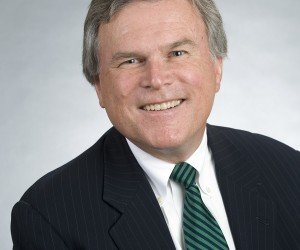 Kevin H. Kelley, Chief Executive Officer, Ironshore Inc.
Kevin H. Kelley, Chief Executive Officer, Ironshore Inc. John Wurzler, President, OneBeacon Technology Insurance
John Wurzler, President, OneBeacon Technology Insurance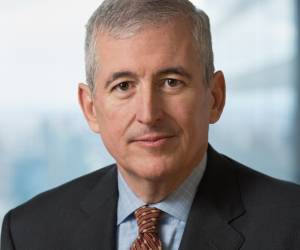 Alan B. Colberg, President and Chief Executive Officer, Assurant, Inc.
Alan B. Colberg, President and Chief Executive Officer, Assurant, Inc. Manny Rios, President and CEO, American Modern Insurance Group
Manny Rios, President and CEO, American Modern Insurance Group Dave Pratt, General Manager, Usage-Based Insurance, Progressive
Dave Pratt, General Manager, Usage-Based Insurance, Progressive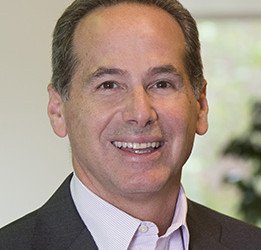 Berto Sciolla, EVP and Manager of North American Treaty Reinsurance,Gen Re
Berto Sciolla, EVP and Manager of North American Treaty Reinsurance,Gen Re Greg Hendrick, Chief Executive, Insurance, XL Catlin
Greg Hendrick, Chief Executive, Insurance, XL Catlin Anand Rao, Principal, PwC U.S. Advisory Practice
Anand Rao, Principal, PwC U.S. Advisory Practice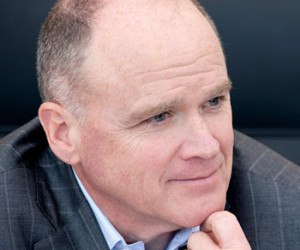 Mike McGavick, Chief Executive Officer, XL Catlin
Mike McGavick, Chief Executive Officer, XL Catlin David M. Lightfoot, Managing Director, Head of GC Analytics – Americas, Guy Carpenter
David M. Lightfoot, Managing Director, Head of GC Analytics – Americas, Guy Carpenter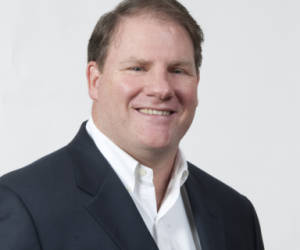 Conan Ward, Chief Executive Officer, Hamilton USA
Conan Ward, Chief Executive Officer, Hamilton USA Ming Lee, Chief Executive Officer, AIR Worldwide
Ming Lee, Chief Executive Officer, AIR Worldwide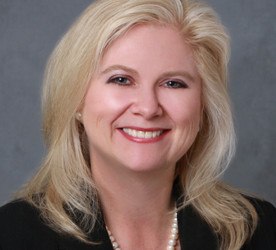 Laura Hay, National Insurance Sector Leader, KPMG LLP
Laura Hay, National Insurance Sector Leader, KPMG LLP John Lupica, Vice Chairman, ACE Group; Chairman, Insurance–North America
John Lupica, Vice Chairman, ACE Group; Chairman, Insurance–North America
 Laura Hay, National Insurance Sector Leader, KPMG LLP
Laura Hay, National Insurance Sector Leader, KPMG LLPQ1: In your view, what has been the greatest innovation in the P/C insurance industry in recent years? Explain.
Hay (KPMG): Big data, analytics and predictive modeling are transforming the insurance industry. The global volume of data is growing by the millisecond, and insurers are finding new ways to harness data to find growth opportunities, enhance operational performance, improve customer acquisition and retention, and drive business results. The critical issue has become not the availability of data but identifying what data to gather, how to analyze it effectively, and how to apply the results to the business.
Data and analytics have revolutionized the way many lines of business are priced and underwritten and have been instrumental in creating new Fortune 500 companies like Progressive in the insurance sector.
In addition, customer demands are driving technology investment and the development of innovative products and services like usage-based auto insurance and telematics products and remote claims service by phone or drone.
Whether it is auto insurers allowing customers to upload photos of minor accident damage via their smartphones or expediting payments via direct deposit, the customer simply expects more. Insurers must innovate to stay relevant and gain competitive advantage.
Q5: What is the biggest obstacle to innovation within the insurance industry? Explain. What is your company doing (or what can the industry do) to overcome this obstacle?
Laura Hay, KPMG LLP
Hay (KPMG): Property/casualty businesses are operating in a highly competitive and complex environment, whether they’re tackling legacy IT infrastructure, attracting and retaining the right talent, or meeting regulatory compliance requirements. The fragmented nature of the P/C industry makes it difficult for one player to amass a great amount of cash to invest or disrupt other companies and keeps insurers mired by inflexible systems, products and filings. Technology will be one of the key engines of change, providing knowledge of customers through data analytics and customer interfaces through social media, smartphone technology and other channels. Having a flexible and agile infrastructure enables companies to better manage complex and varying regulatory requirements worldwide and provide the actuarial and statistical underpinnings of new products, pricing and risk management.
Once managed and run by the IT team, it’s time change management in information technology areas is elevated to a higher level of decision-makers and, ultimately, into the boardroom. Aligning big data and analytics with the business strategy requires top-down implementation and the investment in infrastructure to support these business needs.
Equally as important, as baby boomers begin to retire and fierce competition for generation-Y candidates heats up, it’s more critical than ever that insurers create a culture that attracts talent like data scientists.
Q6: Do you believe the next innovation to impact the P/C insurance industry will come from inside the industry or from an external innovator? Why?
Hay (KPMG): P/C insurers should begin preparing for more rapid and more disruptive innovative forces, particularly from external sources. The effects of autonomous vehicles, for example, have the potential to significantly disrupt and transform the automotive insurance industry faster than most in the industry think. Each new wave of technology promises to improve safety and avoid more accidents, and the shift toward autonomous vehicles could lower claim frequency and premium volume and introduce new competition, which may lead to financial stress and consolidation in the insurance industry. Executives should understand their company’s exposure to the change, evaluate their business strategies and prepare their operations.
Inside the industry we’re seeing some of the largest insurers use their large surpluses and capital to establish venture capital units to innovate products for customers and find technology solutions that create greater efficiencies in their own businesses. Further, creating VC teams is an effective way to attract talent that might never have considered the insurance industry as a place to launch a career. These talented individuals are making great leaps in building sophisticated underwriting models; creating services that increase touch points for home and vehicle customers; and developing sensors that detect break-ins, water leaks or electrical malfunctions in the industrial and corporate world.
Q11: Outside of providing risk transfer solutions, what are the most likely areas in which insurers can be innovators? Can P/C insurers disrupt other industries or provide noninsurance solutions by applying innovations developed through their core skills in underwriting and risk analysis, settlement negotiations, catastrophe modeling, environmental science or other areas?
Hay (KPMG): Insurers are examining ways to leverage their expertise in telematics and potentially add telematics-based UBI devices to their portfolio of commercial and homeowners insurance products. The Internet of Things, or IoT, which refers to the integration of devices with the Internet, provides an opportunity with sensor data to prevent claims and improve customer service. Insurers could help prevent claims by managing properties proactively and warning customers of dangerous situations. For example, if a sensor on a pipe shows that the pipe might freeze, the insurer could prevent a claim by warning the owner before it is too late. Insurers have the opportunity to influence other industries looking to leverage telematics like healthcare and manufacturing by continuing to innovate telematics technology and establishing best practices for analyzing the data they’re able to collect.
Additionally, given insurers’ expertise in analyzing and pricing risk, they have an important role to play in helping the global economy adapt to and even mitigate the effects of climate change. Insurers can help incentivize new technologies, offer policies that encourage people to reduce carbon emissions and follow environment-friendly practices, help improve building codes, participate in the ongoing regulatory dialogue, and ultimately foster safer communities.
The critical issue has become not the availability of data but identifying what data to gather, how to analyze it effectively, and how to apply the results to the business.
Read more Innovation Insights by Person:
 Stanley A. Galanski, President and CEO, The Navigators Group, Inc.
Stanley A. Galanski, President and CEO, The Navigators Group, Inc. Mark E. Watson III, President and Chief Executive Officer, Argo Group International Holdings, Ltd.
Mark E. Watson III, President and Chief Executive Officer, Argo Group International Holdings, Ltd. Kevin H. Kelley, Chief Executive Officer, Ironshore Inc.
Kevin H. Kelley, Chief Executive Officer, Ironshore Inc. John Wurzler, President, OneBeacon Technology Insurance
John Wurzler, President, OneBeacon Technology Insurance Alan B. Colberg, President and Chief Executive Officer, Assurant, Inc.
Alan B. Colberg, President and Chief Executive Officer, Assurant, Inc. Manny Rios, President and CEO, American Modern Insurance Group
Manny Rios, President and CEO, American Modern Insurance Group Dave Pratt, General Manager, Usage-Based Insurance, Progressive
Dave Pratt, General Manager, Usage-Based Insurance, Progressive Berto Sciolla, EVP and Manager of North American Treaty Reinsurance,Gen Re
Berto Sciolla, EVP and Manager of North American Treaty Reinsurance,Gen Re Greg Hendrick, Chief Executive, Insurance, XL Catlin
Greg Hendrick, Chief Executive, Insurance, XL Catlin Anand Rao, Principal, PwC U.S. Advisory Practice
Anand Rao, Principal, PwC U.S. Advisory Practice Mike McGavick, Chief Executive Officer, XL Catlin
Mike McGavick, Chief Executive Officer, XL Catlin David M. Lightfoot, Managing Director, Head of GC Analytics – Americas, Guy Carpenter
David M. Lightfoot, Managing Director, Head of GC Analytics – Americas, Guy Carpenter Conan Ward, Chief Executive Officer, Hamilton USA
Conan Ward, Chief Executive Officer, Hamilton USA Ming Lee, Chief Executive Officer, AIR Worldwide
Ming Lee, Chief Executive Officer, AIR Worldwide Laura Hay, National Insurance Sector Leader, KPMG LLP
Laura Hay, National Insurance Sector Leader, KPMG LLP John Lupica, Vice Chairman, ACE Group; Chairman, Insurance–North America
John Lupica, Vice Chairman, ACE Group; Chairman, Insurance–North America
Read other innovator’s response by question:
- Q1: The greatest innovation in the P/C insurance industry
- Q2: Describe the greatest innovation at your company
- Q3: Innovation or innovator outside the insurance industry
- Q4: How your company encourages innovation
- Q5: The biggest obstacle to innovation within the insurance industry?
- Q6: The next innovation to impact the P/C insurance industry
- Q7: Your role in leading innovation.
- Q8: Best book you have read about innovation
- Q9: Describe a failed initiative at your company
- Q10: Collaborating with market competitors
- Q11: Can P/C insurers disrupt other industries?
Get all 16 interview neatly packaged in a single PDF download. Explore ideas by personality and by question. More than 60 pages of content.




















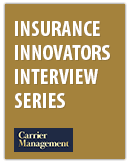
 Women Are Now Leaning Out in the Workplace
Women Are Now Leaning Out in the Workplace  Truckers Who Fail English Tests Are Pulled Off Roads in Crackdown
Truckers Who Fail English Tests Are Pulled Off Roads in Crackdown  Unpacking a Consumer Intervenor’s Novel Idea
Unpacking a Consumer Intervenor’s Novel Idea  How One MGU Grew Fivefold When Capacity Fled Cat-Prone Property Markets
How One MGU Grew Fivefold When Capacity Fled Cat-Prone Property Markets 




